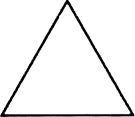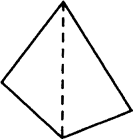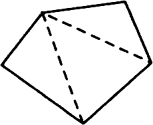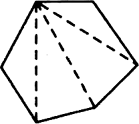Sponsor Area
Understanding Quadrilaterals
Given here are some figures. 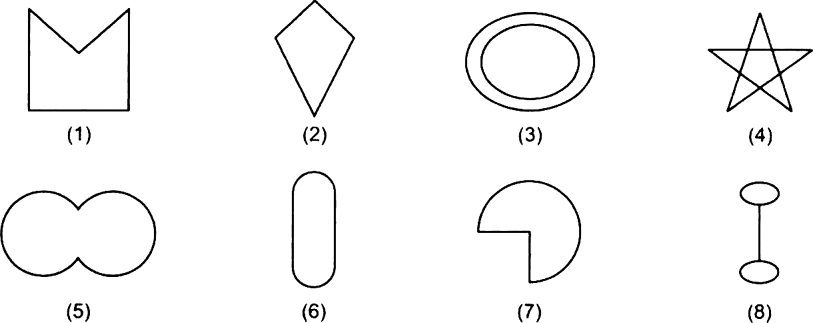
Classify each of them on the basis of the following.
(a) Simple curve
(b) Simple closed curve
(c) Polygon
(d) Convex polygon
(e) Concave polygon
Solution: (a) Simple curves are: (1), (2), (5), (6) and (7).
(b) Simple closed curves are: (1), (2), (5), (6) and (7).
(c) Polygons are: (1), (2) and (4).
(d) Convex polygon is: (2).
(e) Convex polygons are (1) and (4).
How many diagonals does each of the following have?
(a) A convex quadrilateral
(b) A regular hexagon
(c) A triangle
Solution:
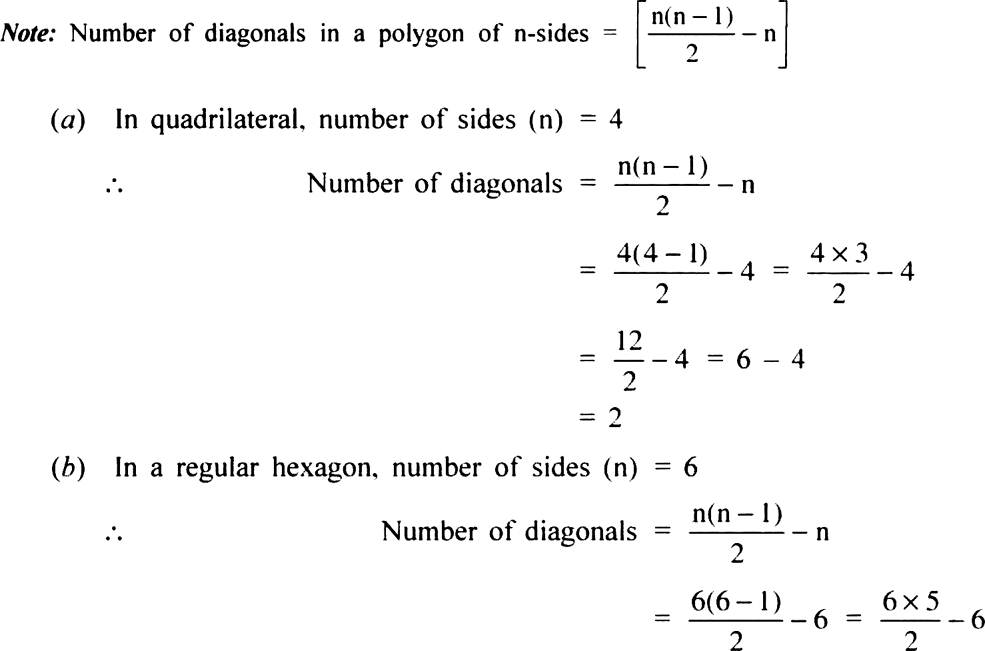
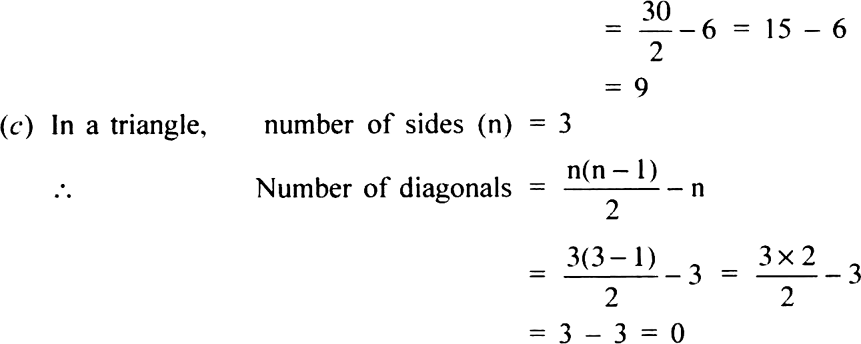
What is the sum of the measures of the angles of a convex quadrilateral? Will this property hold if the quadrilateral is not convex? (Make a non-convex quadrilateral and try!)
Solution: The sum of measures of angles of a convex quadrilateral = 360° Yes, this property holds, even if the quadrilateral is not convex.
Examine the table. (Each figure is divided into triangles and the sum of the angles deduced from that).
|
Figure |
|
|
|
|
|
Side |
3 |
4 |
5 |
6 |
|
Angle sum |
180° |
2 x 180° = (4 - 2) x 180° |
3 x 180° = (5 - 2) x 180° |
4 x 180° = (6 - 2) x 180° |
What can you say about the angle sum of a convex polygon with number of sides?
(a) 7 (b) 8 (c) 10 (d) n
Solution: From the above table, we conclude that sum of the interior angles of polygon with n-sides = (n - 2) x 180°
(a) When n = 7
Substituting n = 7 in the above formula, we have Sum of interior angles of a polygon of 7 sides (i.e. when n = 7)
= (n - 2) x 180° = (7 - 2) x 180°
= 5 x 180°
= 900°
(b) When n = 8
Substituting n = 8 in the above formula, we have
Sum of interior angles of a polygon having 8 sides
= (n - 2) x 180° = (8 - 2) x 180°
= 6 x 180°
= 1080°
(c) When n = 10
Substituting n = 10 in the above formula, we have
Sum of interior angles of a polygon having 10 sides
= (n - 2) x 180° = (10 - 2) x 180°
= 8 x 180°
= 1440°
(d) When n = n
The sum of interior angles of a polygon having n-sides = (n - 2) x 180°
Sponsor Area
Mock Test Series
Mock Test Series






